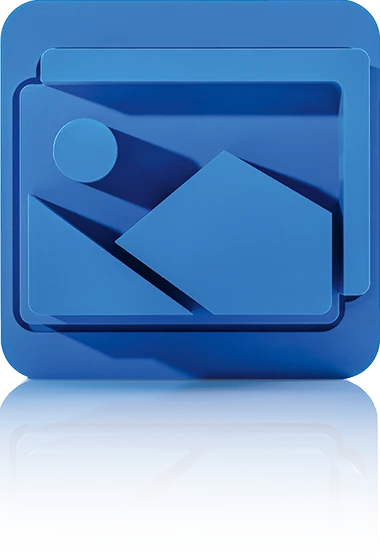I look forward to a personal consultation with you.
Call now +49 7031 9881-770
or send me a message
Herby Tessadri
Sales Manager and Authorized Signatory
MAM/DAM
Manage Image Material in a Media-Neutral Way and Optimally Serve every Medium
In the integrated Media Asset Management (MAM) or Digital Asset Management (DAM), photos, graphics, icons, documents, videos and CAD drawings can be merged and categorized in a media-neutral way. Based on the source format, media-compatible output formats are automatically generated for print, Internet or Office. This is done with the integrated graphics and video converter, or alternatively with Adobe Photoshop.

Function Overview
Possibilities of the MAM/DAM
The fully integrated MAM/DAM module of the crossbase software solution enables you to manage all your media elements effectively. All your media data is brought together centrally in the crossbase database. The naming is clear, comprehensible and meaningful. During import, you can categorize the data individually according to your requirements, add metadata and link it to projects or products. You can manage old and new versions and store keywords, captions and metadata (e.g. license rights) in a structured manner.
Import, Graphics and Video Converter
During the import, additional output formats are automatically produced using format templates. For example, TIF, PNG or JPG formats can be generated from PSD, AI or EPS files. Either the standard graphics converter from crossbase or Adobe Photoshop can be used for the conversion. This means that the media files are always available in the appropriate form (format, color profile, resolution), version and language. The format templates are created by the administrator. Parameters such as file format, resolution, dimensions or rotation angle can be set. Embedded color profiles are also taken into account during conversion.
The video converter can be used to create all common video formats and cut video sequences.
Media element and media file
Media files with the same meaning are combined in a media and language-neutral media element. The media files within the media element can differ in terms of file format, language and version, for example.
A media element can be linked multiple times by "drag & drop" or automatically via the article number, e.g. in the context of a product, in a publication or on an HTML page. When changes are made to media files, these links are retained so that they affect all locations. You can display where a media element is used with a click of the mouse.
Structuring
Media elements are always assigned an image category during import (product photo, assembly graphic, company photo, etc.). The categories, the so-called naming conventions, can be defined individually. The media elements can also be labeled market-specifically in order to create country-, industry- or target group-specific publications.
Version control
The validity of a media file (e.g. an approval document or an image) can be controlled via assigned validity periods. In this way, future publications can be prepared without affecting existing media.
Image sections
Social media channels such as Instagram, Pinterest, LinkedIn etc. expect images in certain sizes and formats. These formats can be created in crossbase and selected via an image section dialog. This makes it possible to select and save any image section based on the selected format. Adobe Photoshop is not required for this function.
Language-specific and dimensioned product graphics
A template graphic is created with Adobe Illustrator that contains placeholders for text components or dimensions. The texts themselves are maintained independently and referenced to the graphic. The production of language and dimension-specific graphics is fully automated for all desired formats each time a change is made.If graphics are already available in AI format, these can be transferred automatically. The texts are extracted and replaced with placeholders. If the same text content already exists in the database as a text module, this is used.
QR code/barcode formats
QR codes and barcodes can be produced automatically with crossbase and Adobe Illustrator. Around 200 different barcode types are available. Parameters such as dimensions, resolution, bar height and file format can be configured. The error correction level and encoding can also be defined for QR codes.

